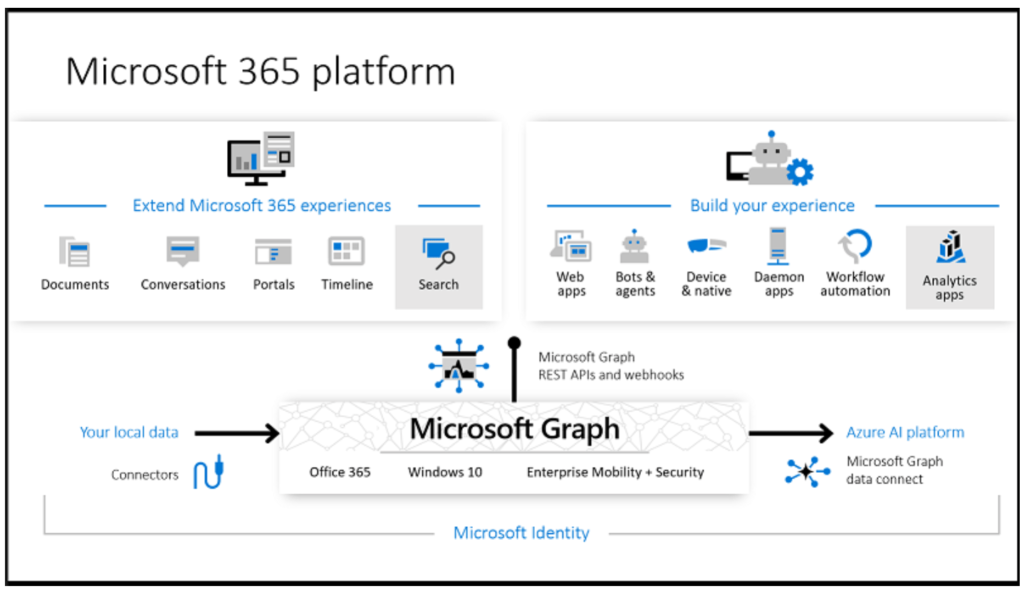Data driven Insights from Microsoft Graph is a Boon for Companies

Microsoft is famous for its tools which help people to work more efficiently and to increase their productivity. With their cloud services, Office 365 and Azure, Microsoft is collecting a massive amounts of usage data, and during the last two years, they have focused on developing ways to analyze this data and to give customers the ability to use it. One such step is giving more focus towards employee engagement and productivity products backed by data frameworks like power platform and Microsoft Graph. In the last Microsoft Ignite 2018 and Microsoft Build 2019 conferences, the IT giant shared some insights into their customers: they want to be more agile, to do digital transformations, and to keep their companies competitive in the future. Based on this, MS came to 3 main conclusions:
50% of transformations fail because human behavior doesn’t change. Companies that focus on culture are 10x more likely to succeed in their digital transformations. Collaboration data from everyday work can change the culture from soft to some measurable outcomes.
They also gave examples of some customer problems:
Some had issues like attrition. After analysis, their data revealed that the most engaged employees have infrequent 1:1 meetings with their managers. After tackling this issue, they started to have more frequent 1:1 meeting and their attrition rate got proportionally lower; as a result, the customer has now managed to lower attrition by 40%. Platforms like employee recognition rewards like Bravo develop a culture of appreciation across the enterprise, inculcating pride of association. These happy workplaces result in more productive and less attrition driven.
Microsoft Graph
Microsoft Graph was initially released in 2015 as a platform to connect all Microsoft products – Office 365, Windows, SharePoint, Azure, etc. – to offer a better user experience across the product range, so, for instance, when you upload a file to one of the products it’s accessible in all other Microsoft products, connected through the cloud.
During the last few years, they have enriched that accessibility, by adding AI on top of the data, providing a set of tools to access data on Microsoft Graph at scale, while allowing administrators granular consent and full control over their Microsoft Graph data; Data Connect streamlines the delivery of this data to Microsoft Azure. They have built various connectors for Azure, Power BI, and perhaps most importantly, they have created REST API.
Powering the Microsoft O365 Platform

Microsoft Graph API creates a powerful way to empower your existing applications, web apps, bots, and agents. You can create customized intelligent applications powered on usage data in your company to boost productivity or create powerful insights like the ones mentioned before and tackle any problems. Let’s briefly check out REST API. There is one great endpoint where you can find a demo and reach all sample data examples, but also thanks to SSO you can instantly access your own data!



